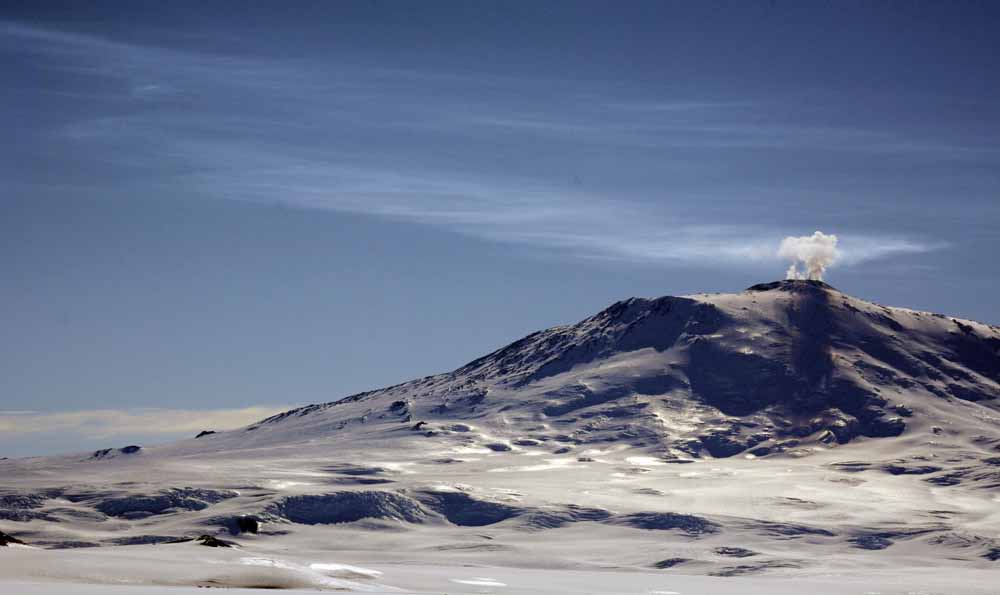Page 2/2
Scientists use muscle and mass spectrometer for studies on volcanic rocksRift or plume, one thing is for certain: Erebus is a hotspot of volcanic activity. “The very existence of Erebus implies there is a huge source of magma being generated in the mantle,” Kyle said by e-mail while preparing to return to McMurdo Station, which supports the research at MEVO. “This upwelling can be in the form of a broad zone of upwelling [representative of a rift system] or a central pipe-like plume rising from very deep in the mantle,” he added. “Either way, the geophysics data … shows the mantle under Erebus is very hot, and this means there is upwelling, as evidenced by Erebus’ activity and lava lake.” Ross Island is believed to be less than four million years old. The three nearby inactive volcanic centers – Mount Bird, Mount Terror and Hut Point Peninsula – are mostly made of basalt rocks that contain a special mineral called kaersutite, Kyle explained. Erebus is different. Its magma rock is composed mostly of phonolite, which is more explosive than basalt. Mount Vesuvius, the infamous volcano that leveled Pompeii in 79 AD, also contained phonolite lava. Erebus started forming about 1.3 million years ago, according to Kyle. He said there have not been any documented large eruptions from the volcano, though scientists have inferred that a “fairly significant” explosion occurred about 37,000 years ago based on ash dated from a site near Alan Hills, about 300 kilometers from the volcano. In addition, in the past there have been two episodes of caldera collapse where volcanic activity reshaped the summit of the volcano above 3,000 meters. One of these major events may have been a large eruption that formed the 37,000-year-old ash event, Kyle said. “There are almost daily eruptions at Erebus, but the last major activity was the formation of 10 lava flows that fill the caldera,” he added. That happened sometime between 4,500 and 10,300 years ago, based on the most recent research. Much less is known about the eruptive history of the three dormant volcanoes. That’s where the rocks collected by Sims and partners in 2012 and this year become useful. A cutting-edge plasma mass spectrometer operated by Sims’ lab at the University of Wyoming can make complex measurements of radiogenic isotopes of different elements that serve as tracers for various processes. Isotopes are atoms of the same element whose nuclei contain the same number of protons, but a different number of neutrons. Stable isotopes do not decay over time. Radiogenic isotopes decay into new atoms over time by emitting radiogenic particles. The original type of atom is called the parent and the element that is produced after radiogenic decay is called the daughter. The rate at which one atom decays into another is unique to each isotope system and can be quantified by the system’s half-life. In particular, long-lived radiogenic isotopes of esoteric elements like strontium, neodymium and hafnium can provide data about the sources of magma. Other details that can be gleaned from these analyses include determining how fast the magma is rising to the surface and how long it sits in the magma chamber, Sims explained. “You always need basic science to understand the system,” he said. Ken Sims: National Geographic Explorer CU-Boulder was used as a resource on radiogenic isotopes. |



For USAP Participants |
For The Public |
For Researchers and EducatorsContact UsU.S. National Science FoundationOffice of Polar Programs Geosciences Directorate 2415 Eisenhower Avenue, Suite W7100 Alexandria, VA 22314 Sign up for the NSF Office of Polar Programs newsletter and events. Feedback Form |



